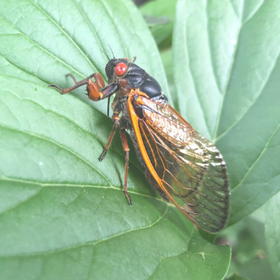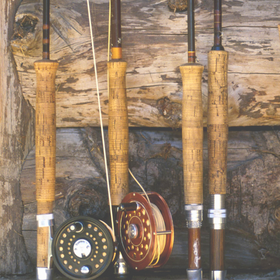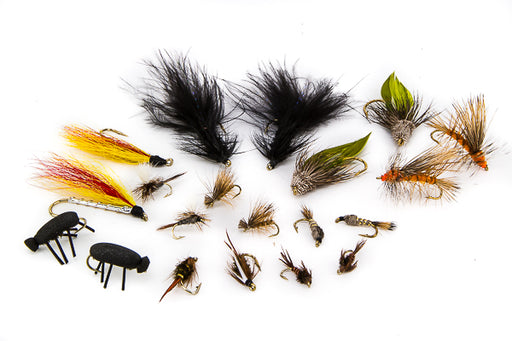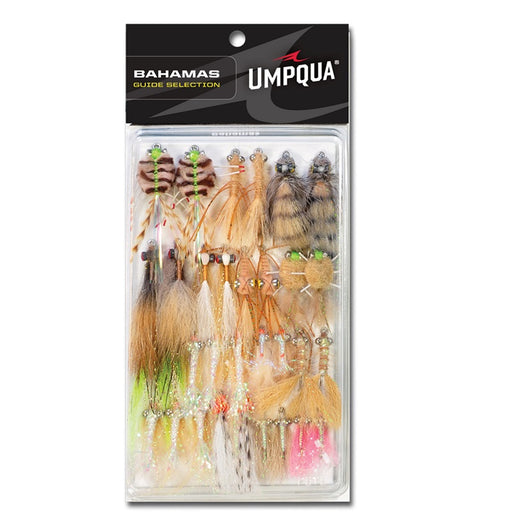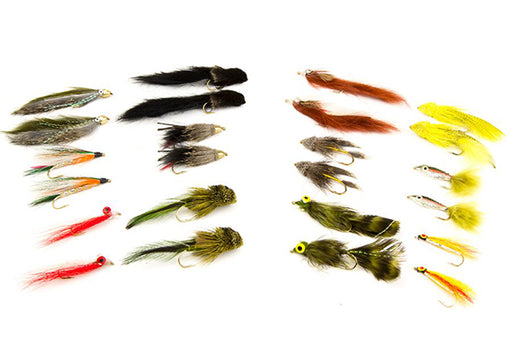
Favorite Two-Handed Winter Steelhead Setups
There is a strange group of anglers that prefers fishing in the worst conditions. Wind, snow, rain, sleet, all in the depths of winter. No one ever describe the Washington Coast as pleasant in the winter, yet a dedicated group of anglers descends upon the Pacific Northwest every winter looking for chrome. They bring long rods, heavy lines, and they fish as hard as any crew out there. Here at Big Y Fly Co, we get that. For many of us, winter steelhead is the raisin-de-etre.
Rods
-
Orvis Mission Two-Handed Spey Rod $798 - Orvis Mission Spey Outfits, starting at $927: The Mission Spey rod is light, balanced well and just a pure joy to cast. We love the 13' 7wt. There is a very generous "sweet spot" in the powerful mid-section that allows for great recovery and a wide range of casting styles and abilities. The action has a real mama-bear feel to it and it is really hard to put down at the end of a session. One of the finest fly rods that I have put my hands on.

- Echo TR Spey Rod $379 - Echo TRO Spey Outfits, starting at $488: Echo's TR (Tim Rajeff) rod is one of the faster spey rods that we like. This rod has a really fantastic cast when you get it dialed in. It will take a few minutes (or hours,d ays, weeks..) to figure it out, but once you have it, this rod can really cause you to completely zone out (or in), You can clear your mind, fire lazer beams into the river for an hour and then come to realize that you waded down a mile long run in a perfect zen state... Not all rods have that ability. While the action is fast, it can be tamed a little by going on the heavier side of the recommended grain window with a Skagit head.

- Douglas DXF Switch $629-729 - Douglas DXF Switch Outfits, starting at $708: Vic picked up the 11'6 8wt last year. He has a real hard time giving it up, even for a few minutes to let us cast it. This rod is uber-powerful. Fast, but not too stiff, it can launch a bus. Vic prefers an OPST commando head on it, and he keeps that forward stroke pretty small and low to the ground. Minimal effort, maximum returns. He highly recommends this rod, and no one here would disagree.

- Temple Fork Axiom II Switch Rods $449 - Temple Fork Axiom II Switch Outfits, starting at $578: TFO has always made a nice switch rod. From the Deer Creek series now to the Axiom II, their rods are a joy to cast. Like the DXF, the Axiom II switch rod is fast and does not require a large casting stroke to achieve desired results. Not quite as "beefy" as the DXF, it has a lighter, smoother feel in hand, but still produces plenty of juice.
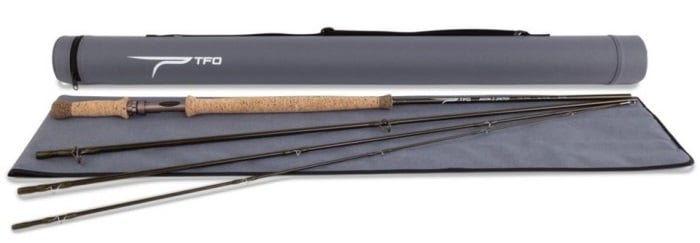
Reels
Spey reels will both hold the over-sized line as well as provide proper balance to the rod. Spey rods can have a heavier tip in addition to the extra length of the rod. This means that an angler will have to use a heavier reel in order to counter-balance the rod. Two-handed rods under 12' in length will typically require a reel that is meant to hold a weight forward floating line that is +2 sizes heavier than the size of your two-handed rod. So if I buy an 11'6" 7wt rod, I would look for a reel that is built for 9wt single handed rods. At 12'+, a reel 3+ sizes large is more appropriate much of the time. After saying all of that, there are plenty of reels out there that are specifically buillt for two-handed fishing. This often provides a couple of different things. Proper weight balance as well as line capacity. A third feature of many two-handed reels is a caged (full) frame. The cage prevents a thin running line from being able to "jump the gap" on the frame and end up on the wrong side of the reel frame. It is a known issue with some reels. Our favorite two-handed reels:
- Big Y General 9/10 $189: Our 9/10 General reel is no joke. Fully machined, smooth edges, T6 aluminum, sealed drag, full frame and proper balance for a good chunk of winter steelhead rods. The 9/10 comes in at 9.1oz and has plenty of capacity for 150+ yards of 20# backing along with a 550 grain Skagit head.

- Sage Spey Reel $500: This is a beautiful reel. Perfect in just about every way. The 6/7/8 is balanced well for most of the steelhead setups that we would use around here. It comes in at 9.8oz on our postal scale. The 7/8/9 came in at 11.0oz on our scale. The 7/8/9 is going to be a better fit for rods 13'6" or longer. The full frame, smooth drag and flawless asthetics make this one of the nicest reels on the market.

-
Orvis SSR Disc IV Reel $349: Orvis' much beloved Battenkill Disc Spey reel was sadly discontinued last year after a solid run at a great price. The new SSR reel has shown some nice improvements on the Disc Spey. The size IV is the most useful size for winter steeleheading in our area. It is ideal for 6-8-wt. switch and full-length two-handed applications. At 9oz, it has a similar weight to our General reel. The SSR features a smaller overall diameter, but it should have a larger capacity due to a smaller arbor size. This reel has the same quality drag as their popular Hydros reel, and it should be at the top of your list for a new spey setup

- Hardy Salmon Marquis: You can't talk about spey reels without mentioning Hardy. These gorgeous reels are made almost exactly the same as they were 80 years ago. Fantastically machined, finely crafted, loud as a jet plane. The click-pawl drag on a Hardy is not for everyone. The entire community will hear you when you hook a fish, but that drag system will likely never, ever fail. Even after you are long gone and your grandkids are using that reel, it will not fail. Beyond that, click-pawl reels have the lowest "start-up inertia" of any reel drag system. That is the amount of energy that it takes to cause a spool at rest to become a spool in motion. It is more than it takes to keep it in motion for all disc drag reels, but not for click-pawl reels. The size II comes in at 8.2 oz and has all the features you would want (if you want a click).

Lines
For the most part, winter steelhead anglers love to swing flies. That is what the two-handed rods are made for. There are plenty of folks out there throwing nymphs and beads, but the bulk of the damage is done with two-handed rods and Skagit heads. Skagit heads are short, compact and really heavy. Think shotgun. According to the "standards", a typical 7wt floating line will weigh about 180 grains or 0.42oz. A Skagit head for a 7wt spey rod can weigh up to 550 grains, 3x heavier. Add a sink tip and this spey rod is casting up to 700 grains, or 5.5x more than a standard 7wt floating line. So there is a bit of a difference in the type of line
Skagit heads are really essential to swinging big flies for winter steel. Skagit heads require a running line (also called shooting line) on the back side of the head and the front side of the backing. They also require a tip on the front side of the head. All of these line pieces can be attached via loop-to-loop connections. The tip is usually quite heavy. A 10' sink tip can weigh more than an entire 5wt floating line. These are almost always made from a "T-material", a tungsten-infused line. Most anglers use a 10' tip. Here are our favorites:
Heads for rods under 12'
- OPST Commando: Still the shop and local favorite for switch rods. This really short head turns over the largest of flies, casts like a dream and really just makes life easier on the river. It doesn't have great distance capabilities, but for fihsing most water, it is the perfect head for winter steelhead fishing with an 11'6" or shorter rod.

- Airflo Skagit Scout: Very similar to the Commando, but it has a little more body to it. It takes a hair more energy to get it moving, but it really goes once you get that cast started. Another local favorite.

Heads for rods over12'
-
Airflo Skagit Driver: Our favorite Skagit line. It lays out smoothly and easily, even with huge sink tips and flies. This is the gold standard of Skagit heads.

- RIO Elite Skagit Max Launch: Close behind the Airflo, the newish RIO Skagit launch is quite impressive. It definitely transfers energy to the tip in a more efficient manner than previous models that had a tendency to create a hook or a draw on big casts. A few of us have been fishing this head lately and are quite impressed. Would put that right on par with the Airflo line.

Sink Tips
In spey world, there are two names that get most of the attention. Both of these companies make excellent tips. There is no reason to choose one over the other in particular, nor is there reason to avoid mixing them in your setup.
- RIO MOW Tips and RIO i-MOW Tips: These tips are divided into categories by weight. This is not always directly correlated to sink rate, but more about matching the weight of the tip to match the Skagit head. For most PNW winter steelhead anglers, there are about 5 or 6 tips that will get them through most conditions. Those are listed below.

- Airflo Flo Tips and Airflo CCT Tips: Airflo's tips are similar to RIOs in weight, size and features. Airflo tips are divided up a little differently than RIOs, but they have the same essential configurations.

Essential Sink Tips for Winter Steelhead
Anglers will need to carry about 5 tips to cover most situations. Most anglers can get through a season with these. The first four on the list get 75%+ of the action for most anglers. Listed in order of usefulness:
- -10' T-10 or T-11. RIO MOW or Airflo CCT tip
- -10' T-14, RIO MOW or Airflo CCT tip
- -7.5' T-10 or T-11 with 2.5' floating or intermediate sink on the back end. RIO MOW, iMOW or Airflo FLO tip
- -7.5' T-10 or T-14 with 2.5' floating or intermediate sink on the back end. RIO MOW, iMOW or Airflo FLO tip
- -iMOW medium, Intermediate Sink. For hitting those really shallow tailouts when the water is clear. 10' T-7 or T-8. Airclo CCT or RIO MOW
Shooting/Running Lines
Shooting lines go behind the head and are there to help shoot the line through the guides when casting. For beginners, we typically recommend a line that feels and acts like the floating fly lines that anglers are already familar with. Coated lines are easy to grip, float and shoot well. Our favorites include:
-
RIO Powerflex Ultra: We like the .030 or the .035 for steelheading. Grips well, casts well, really slick, no complaints.

- RIO Elite Metered Running Line: Doesn't feel quite as slick as the Ultra, but it has less stretch, which allows you to feel subtle takes easily. Plus the metered sections allow you to calculate the distance you are fishing

Monofilament

- OPST Lazar Line: This costs a bit more than others, but it is "precision wound" which means that the line is a really consistent diameter with no kinks or imperfections, even on a small scale. It is the nicest mono running line out there.
- RIO Slickshooter: This line features a half-moon shape, which really helps grip the line when wet and cold. It performs well too.
- Amnesia: Many casting distance records were set using Amnesia running line. Still great, still cheap.

